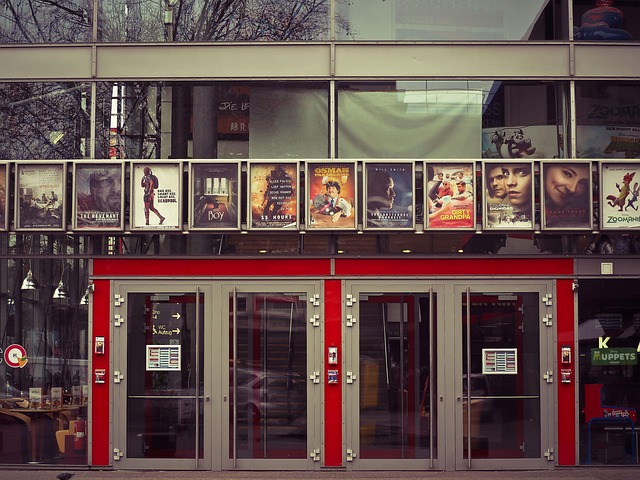"Fear and Loathing in Las Vegas" (1998) is a groundbreaking movies about casinos that portrays the wild, drug-fueled escapades of journalist Raoul Duke and his lawyer Dr. Gonzo as they uncover Las Vegas' hidden underbelly. The film offers a raw critique of capitalism and the allure of easy money, showcasing the dual nature of casino culture as both an exhilarating adventure and destructive force. With iconic performances from Johnny Depp and Benicio del Toro, this casino movie is a cult classic that transports audiences into a world of excess and paranoia, solidifying its place in popular culture.
“Dive into the dark allure of Fear and Loathing in Las Vegas, a cult classic that exposes the underbelly of casino culture. This article unravels the intricate web of addiction and excess spun by the film, offering a critical gaze at the glittering facade of Sin City. From its iconic characters to memorable scenes, we explore how Fear and Loathing has left an indelible mark on cinema, providing a unique perspective on movies about casinos. Uncover the lasting impact of this revolutionary work.”
- Unveiling the Dark Side of Gambling: A Look at Fear and Loathing in Las Vegas
- The Film's Impact: How it Portrays Casino Culture and Addiction
- Iconic Elements: Exploring Memorable Scenes and Characters from the Movie
Unveiling the Dark Side of Gambling: A Look at Fear and Loathing in Las Vegas

In the realm of movies about casinos, Fear and Loathing in Las Vegas stands out as a unique and controversial entry. This 1998 film adaptation of Hunter S. Thompson’s classic novel takes viewers on a wild ride through the seedy underbelly of Sin City. The story follows the drug-fuelled escapades of journalist Raoul Duke and his lawyer, Dr. Gonzo, as they descend upon Las Vegas for a bizarre assignment. Unveiling the dark side of gambling, the movie portrays the excesses and depravity that can lurk beneath the glitz and glamour of the casino culture.
The film’s depiction of Las Vegas is far from the picturesque panorama often portrayed in tourism advertisements. Instead, it reveals a city where greed, desperation, and madness intertwine. Through a series of surreal and humorous events, Thompson exposes the destructive potential of unbridled capitalism and the allure of easy money. This gritty portrayal challenges the romanticised view of casinos often depicted in other movies about gambling, offering a raw and unsettling glimpse into the lives of those consumed by the high-stakes world of Vegas.
The Film's Impact: How it Portrays Casino Culture and Addiction

“Fear and Loathing in Las Vegas” stands out as a seminal work among movies about casinos, offering a unique perspective on the allure and perils of the gambling capital. The film masterfully portrays casino culture as both a thrill-inducing and destructive force, reflecting the duality of human nature. Through its exaggerated narrative, it explores themes of addiction, excess, and the pursuit of an illusory American Dream.
Set in the vibrant, yet sinister, atmosphere of Las Vegas, the story delves into the mind of a drug-fueled protagonist, capturing the hedonistic lifestyle that casinos promote. The depiction of gambling as an addictive substance in itself is a powerful message within this casino movie, highlighting the financial and personal risks associated with an unguarded pursuit of fortune.
Iconic Elements: Exploring Memorable Scenes and Characters from the Movie

In Fear and Loathing in Las Vegas, a movie that redefined road movies, iconic elements come alive on screen. The film’s memorable scenes, from the opening car ride through the desert to the psychedelic trips inside casinos, capture the essence of excess and escapism. These vivid visuals, coupled with Hunter S. Thompson’s distinctive narrative voice, transport viewers into a world where reality blurs and paranoia takes hold.
The characters, such as the relentless Raoul Duke (played by Johnny Depp) and his lawyer Dr. Gonzo (Benicio del Toro), are etched in cinematic history. Their adventures within the glittering facade of Las Vegas casinos highlight the darker underbelly of consumerism and hedonism. The movie’s exploration of themes like addiction, paranoia, and the American Dream makes it a cult classic among movies about casinos, leaving an indelible mark on popular culture.
“Fear and Loathing in Las Vegas” stands as a compelling exploration of the dark underbelly of gambling, leaving a lasting impact on both its viewers and the genre of movies about casinos. Through its unique narrative and iconic scenes, the film sheds light on casino culture and the devastating effects of addiction. By delving into these themes, it continues to captivate audiences and offer valuable insights into the human struggles hidden beneath the glittering facade of Sin City.






